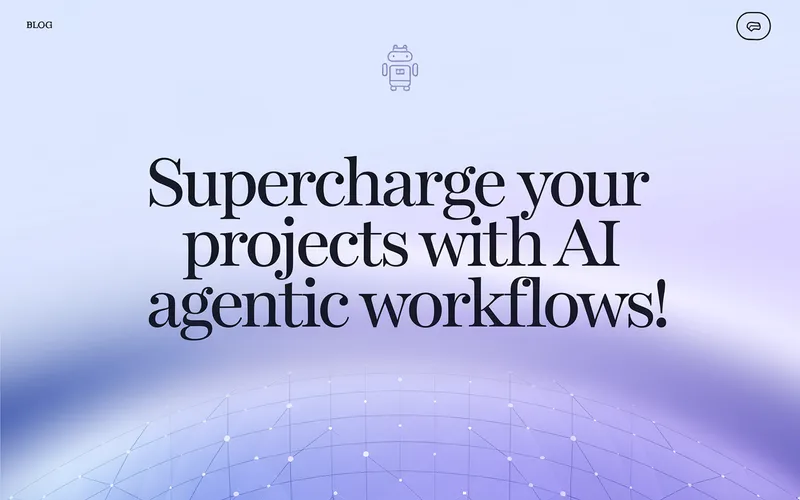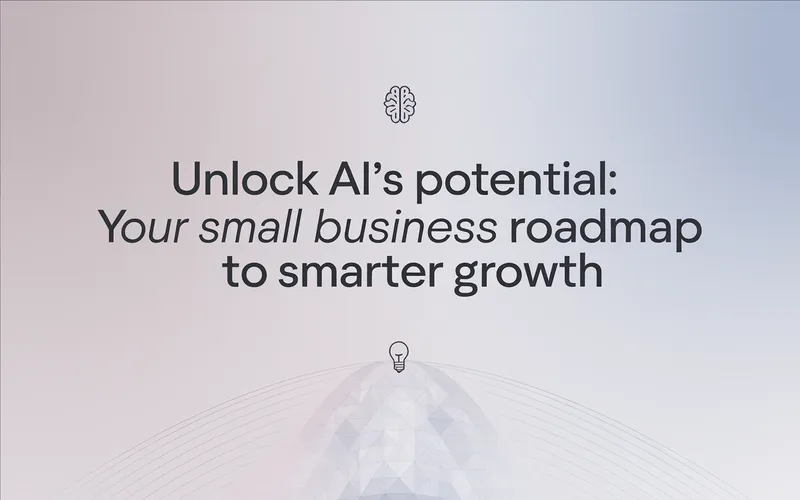
Artificial Intelligence has rapidly evolved to become a cornerstone in modern business strategies, especially in enhancing customer satisfaction.
In 2025, AI-powered customer satisfaction tools are not only streamlining operations but also transforming customer service into a personalized, efficient, and dynamic experience.
This blog post is crafted for business owners, C-level executives, and IT managers in small to medium-sized enterprises who aim to push the boundaries of innovation in customer engagement.
We will explore several key areas, including:
The role of AI in reshaping customer service
Key tools and technologies driving innovation
The benefits and ROI of implementing AI in customer interactions
A step-by-step guide to adoption
Measuring performance through relevant KPIs and metrics
Future trends that promise to further revolutionize customer satisfaction
Whether you are an early adopter or still weighing your options, this post offers comprehensive insights and actionable steps on harnessing the power of AI. By leveraging these cutting-edge solutions, organizations can answer the question, what are the benefits of AI for customer satisfaction? and drive impactful, measurable results.
Key AI Tools and Technologies for Customer Service
The evolving landscape of artificial intelligence has introduced a myriad of tools designed to elevate customer service. Today’s market is brimming with AI-powered solutions that not only automate routine tasks but also facilitate complex decision-making processes.
Chatbots have become ubiquitous in providing instant responses to customer inquiries. Utilizing natural language processing, they understand and resolve issues in a conversational manner, ensuring timely assistance around the clock.
Sentiment analysis software plays a pivotal role in interpreting customer feedback from various channels, including social media. These tools help companies discern consumer behavior patterns and detect potential issues before they escalate. Leveraging machine learning algorithms, they offer actionable insights that drive targeted improvements.
AI-powered customer satisfaction tools also extend into the realm of workflow automation. For example:
Intelligent routing systems transfer inquiries seamlessly to the appropriate department or specialist, minimizing response times.
Cognitive search platforms enable customers to find relevant information instantly, boosting self-service capabilities.
Automated personalization engines further enhance service by analyzing extensive customer data. These systems offer personalized recommendations and proactive solutions, allowing businesses to tailor interactions and foster customer loyalty.
Investing in an integrated system of AI-powered customer satisfaction tools is becoming essential for competitive enterprises. As companies embrace these advanced solutions, decision makers must continuously explore emerging technologies and integrate them into their service models.
Ultimately, by leaning on data analytics and AI-driven insights, businesses can not only resolve current issues but also predict future customer expectations. This integrated approach creates an ecosystem where customer queries and feedback are managed more efficiently, driving both retention and overall satisfaction.

Benefits and ROI of Implementing AI in Customer Interactions
Understanding the benefits of AI for customer satisfaction requires a detailed look at its measurable impacts on both business performance and customer experience.
One of the most significant advantages is the remarkable reduction in response time. AI-driven systems can handle multiple queries simultaneously, ensuring that customers are not kept waiting. This improvement not only boosts customer satisfaction but also enhances the efficiency of service teams.
Cost efficiency is another major benefit. Although integrating AI-powered tools requires an initial investment, the long-term savings far outweigh the costs. Automation of routine tasks minimizes labor expenses, enabling skilled professionals to focus on complex issues. In addition, predictive analytics helps reduce errors and optimize resource allocation, leading to increased operational efficiency and a stronger ROI.
Personalization is a key factor in driving ROI. Advanced machine learning algorithms allow businesses to tailor communications based on individual customer behaviors and preferences. This bespoke approach facilitates better engagement, enhances brand loyalty, and enables effective cross-selling and upselling strategies, ultimately increasing revenue streams and overall profitability.
Data-driven insights play a critical role in achieving customer satisfaction through AI. By capturing and analyzing vast amounts of customer data, organizations can gain a deep understanding of customer pain points and expectations. These insights form the foundation for strategic planning and ensure that every decision is aligned with actual customer needs.
Continuous monitoring through key performance indicators allows companies to make agile adjustments to their service strategies, ensuring sustained customer satisfaction. Executive teams must recognize that the qualitative benefits of AI—such as enhanced customer engagement, retention, and advocacy—are as important as the quantitative metrics.
In essence, AI-powered tools transform customer interactions into opportunities for significant financial returns and robust corporate growth.
Step-by-Step Guide to Adoption
Step 1: Evaluate Current Operations
Start by conducting a comprehensive review of your customer service operations. Analyze internal workflows, assess technology systems, and evaluate customer feedback to gain a full picture of current performance. Interview staff and review call volumes to identify recurring issues and inefficiencies. Pinpoint specific areas where automation and intelligent data analysis can drive improvements. This thorough assessment lays the foundation for establishing clear, measurable objectives that align with both business goals and industry best practices.
Step 2: Identify and Shortlist AI Solutions
Create a detailed shortlist of AI solutions that meet your operational needs. Research various tools—such as advanced chatbots, voice-assisted systems, and sentiment analysis software—and compare their track records, scalability, and compatibility with your existing IT infrastructure. Engage with key stakeholders to gather insights on potential benefits and practical challenges. This phase should highlight technologies that offer immediate improvements in responsiveness and set the stage for integrating future innovations.
Step 3: Integrate the Chosen Tools
Develop a clear integration strategy to incorporate the selected AI tools into your CRM and data management systems. Collaborate closely with IT and customer service teams to design a rollout plan that minimizes disruptions. Use iterative testing and pilot programs to validate each component, ensuring that legacy systems and new technology work in harmony. Address potential security concerns and set up monitoring mechanisms to track system performance and the impact on customer experience throughout the integration process.
Step 4: Train Staff and Manage Change
Equip your team with the skills needed to leverage the new AI systems through targeted training programs and hands-on workshops. Provide comprehensive support materials that simplify both routine and advanced functionalities. Cultivate a culture of continuous learning and open communication, addressing employee concerns and resistance to change. A dedicated project management team should oversee the transition, ensuring that both the technical integration and the human adjustments are managed effectively for a smooth, sustainable change.
For business owners looking to optimize efficiency, consider exploring resources such as How Small Businesses are Leveraging AI Solutions for Small Businesses Efficiency. This internal link offers insights on operational effectiveness that can further complement your AI adoption journey.
Measuring Impact: KPIs and Metrics
Once AI implementations are in place, monitoring their impact is crucial to ensure continuous improvement and optimal performance. Key Performance Indicators (KPIs) provide a clear picture of how AI-powered customer satisfaction tools are enhancing operations. One of the primary metrics to track is the reduction in average response time. As AI systems become more adept at handling customer interactions, businesses can expect noticeable improvements in speed and efficiency.
The next important metric is customer satisfaction scores, often measured using surveys and feedback forms. These scores help in assessing how effectively AI has improved the overall customer experience. Additionally, tracking metrics such as customer retention rates and net promoter scores (NPS) can highlight the long-term benefits of AI-driven strategies. The capability of AI to analyze customer sentiment from social media platforms and review sites further adds depth to customer insights.
Operational metrics such as reduced support ticket volume, cost savings, and increased first-contact resolution rates are other indicators of success. By benchmarking these metrics against pre-AI implementation performance, organizations can quantify the return on investment of advanced technologies. Detailed reporting tools integrated within AI solutions aid in compiling these KPIs into actionable dashboards that are accessible to both technical and executive teams.
It is essential to set specific, measurable, achievable, relevant, and time-bound (SMART) objectives when measuring success. Regular review meetings and continuous monitoring of these KPIs enable organizations to adapt quickly to changing customer dynamics and market conditions. Through these efforts, businesses gain an in-depth understanding of how AI can drive not only operational efficiency but also strategic growth.
Another benefit of a robust measurement framework is the ability to conduct A/B testing on various AI-driven initiatives. By comparing different approaches, companies can fine-tune their strategies to maximize customer satisfaction. Emphasizing data analytics ensures that the pursuit of excellence through AI is a dynamic and ongoing process, ultimately aligning with broader business goals.
Future Trends in AI for Customer Satisfaction
As we look toward the horizon of 2025 and beyond, the future of AI-powered customer satisfaction tools holds exciting possibilities. Emerging trends indicate that integration of AI with other advanced technologies, such as augmented reality (AR) and virtual reality (VR), will further revolutionize customer service landscapes. These innovations promise immersive customer experiences where product exploration and service support transcend traditional methods, offering interactive and engaging interfaces that redefine customer interaction.
Another trend on the rise is the use of hyper-personalization. As AI systems become more sophisticated, they will analyze ever-larger datasets in real time to deliver highly customized experiences. This means that businesses can move past generic segmentation and adopt strategies that tailor interactions to individual customer behaviors, preferences, and even moods. The ability to predict customer needs and pre-emptively address them will be a game-changer in achieving impeccable service levels.
Blockchain technology is also expected to play a role in customer satisfaction through AI by enhancing data security and transparency. Customers are becoming increasingly conscious of how their data is used, and blockchain integration can bolster trust by ensuring that data management practices are secure and verifiable. Moreover, as AI ethics and compliance become ethically enforced norms, businesses will need to align their tools with transparent practices that uphold customer trust.
Voice-activated assistants and natural language interfaces are poised to become even more integrated in everyday customer interactions, further blurring the line between digital and human service. In this future scenario, proactive outreach powered by AI algorithms will not only resolve issues faster but will also predict future queries, creating a seamless experience that continuously adapts to evolving customer demands.
The convergence of these technologies will require companies to stay agile and informed. Business leaders are encouraged to invest in continuous R&D, partnerships with tech innovators, and ongoing training for their teams to keep pace with the rapid transformation. Embracing future trends in AI will ensure that customer satisfaction remains at the forefront of strategic priorities, delivering unparalleled service in an increasingly digital world.
Conclusion
In conclusion, the integration of AI-powered customer satisfaction tools is redefining service standards across industries. Throughout this post, we examined how AI is transforming customer service by streamlining interactions, personalizing customer experiences, and providing deep analytical insights that drive operational efficiency.
With the advent of advanced tools such as chatbots, sentiment analysis, and cognitive search platforms, businesses are now better equipped to manage customer relationships in real time—a critical factor in today’s competitive environment.
Business owners, C-level executives, and IT managers must view the adoption of AI not merely as a technology upgrade but as a strategic investment that creates lasting value. By understanding and leveraging the benefits of AI for customer satisfaction, organizations can achieve:
Reduced response times
Cost savings
Enhanced personalization
Improved overall ROI
A well-planned adoption process—including comprehensive internal training, integration with existing systems, and continuous performance measurement through KPIs—sets the stage for a successful transition into a future driven by innovative digital interactions.
Looking forward, emerging trends such as hyper-personalization, augmented reality integration, and blockchain-enhanced data security will deepen the impact of AI on customer satisfaction. Organizations that proactively embrace these trends will not only stay ahead of the competition but also foster stronger, trust-based relationships with customers.
In today’s rapidly evolving digital landscape, sustaining customer satisfaction through AI is not just an option—it is a necessity.
We encourage you to review your current customer service strategies and consider the transformative potential of AI-powered customer satisfaction tools in achieving business excellence. As we navigate through the new era of digital customer engagement, the opportunities for innovation and growth are immense.
Empower your teams, invest strategically in AI, and prepare to witness a significant elevation in your customer interactions. Let this be the roadmap to a future where every customer experience is optimized, personalized, and truly memorable.



